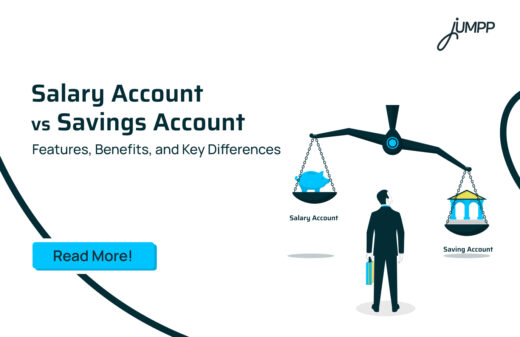Understanding the Savings Account Meaning Before You Open One

Ask anyone how to save, and the first answer, even today, is: “Open a savings account.”Most of us started saving money in a gullak or maybe a hidden envelope tucked under the bed. It worked when we were younger. But as adults, real saving starts with structure. And that usually means opening the right kind of bank account. Not all savings accounts are the same, and surprisingly, many people don’t even know the real savings account meaning. Many Indians open one by default, with a salary credited, and some savings done. For most people, the idea of a “bachat khata” is simple: keep money safe and let it grow a little. However, they often overlook better options, such as money market accounts or CDs, which offer higher returns or greater flexibility.
Today, saving is more than just putting money aside. It’s about choosing the right account that matches your lifestyle, income, and goals. In this guide, we’ll explain the different types of savings accounts, compare features, and help you choose what suits your money habits best.
Saving Account Meaning: More Than Just a Bank Product
A savings account is your default store of money. You save your income here, earn interest on the balance, and access it when you need to spend or transfer.
Savings Account Definition
A savings account is a type of deposit account offered by banks and financial institutions where you can safely store your money and earn interest on the balance. It’s ideal for daily or monthly savings. It lets you deposit and withdraw funds as needed while keeping your money accessible and secure.
Or, to keep it simple:
Bachat khata kya hai? It’s a starting point for anyone who wants their money to move with purpose.
In India, most savings accounts come with:
- A passbook or net banking access
- Interest rates ranging from 2.5% to 7% annually (varies by bank and age group you belong to)
- ATM/debit card, cheque book, and UPI access
- Minimum balance requirements (some are zero-balance)
Today, it’s your gateway to digital payments, financial planning, and personalised insights.
Types of Savings Accounts in India
While the core idea stays the same, the structure of savings accounts changes depending on who they’re meant for. Here’s a look at the most relevant types of savings accounts:
1. Regular Savings Account
This is your standard bachat khata. You deposit your money, earn a small interest, and can withdraw anytime. It’s perfect for everyday savings needs. Most people start with this account because it’s easy, safe, and available at every bank.
2. Money Market Account
Here, you may earn higher interest and get the option to write a few cheques or make debit card purchases. But these accounts usually need a higher minimum balance, so check that before you open one. These accounts are actually a hybrid between savings and checking accounts.
3. Certificate of Deposit (CD)
In India, a Certificate of Deposit is a type of short-term investment offered by banks and financial institutions. It allows you to deposit a fixed amount for a specific period. This is usually between 7 days and 3 years, in exchange for a predetermined interest rate. Unlike a regular savings account, the amount stays locked in, and withdrawing early may come with a penalty. Since the interest offered is typically higher than that of standard savings accounts, CDs are often preferred by those looking for safe but better short-term returns.
4. Student Savings Account
These are made just for college or school students. It usually comes with no minimum balance, zero fees, and simple digital access. It’s a great way to learn how to save while managing pocket money or part-time income.
5. Health Savings Account (HSA)
Mostly seen in countries like the US, but a similar idea applies here. You save money specifically for medical expenses. Some Indian banks are now offering healthcare-linked savings plans with tax benefits. It helps you plan ahead for hospital bills or check-ups.
6. Kids’ Savings Account
You can open this in your child’s name and teach them early. These accounts are built to help children learn how to save, often with parental controls. You can deposit birthday gifts or pocket money and track their savings journey together.
7. Women’s Savings Account
Some banks offer better interest, exclusive offers, or lower balance requirements. They may include benefits like accident insurance, discounts, or even financial planning tools designed for women.
8. Senior Citizen Savings Account
Made for those aged 60 and above, the banks may offer higher interest rates, priority service, and zero balance options. It’s ideal for retirees looking for safe, accessible savings with a few added comforts.
9. Salary Account
This is where your monthly salary gets credited. Usually opened by your employer. It comes with zero balance, quick transfers, and auto benefits. If you leave the job, the bank may convert it to a regular savings account.
10. Joint Savings Account
You and someone else, such as a spouse, parent, or sibling, open and manage the account together. Both of you can deposit and withdraw, depending on the instructions. Helpful for shared goals or managing household expenses.
11. Zero Balance Account
No pressure to maintain any money in it. You can keep it empty, and the bank won’t charge you. Great for students, low-income individuals, or first-time account holders.
12. Digital Savings Account
Open it on your phone — no paperwork, no branch visits. Digital savings accounts are becoming very popular in India because they are fast, paperless, and easy to manage through mobile apps.
13. Business Savings Account
For entrepreneurs, shop owners, and startups. These accounts are designed to manage business earnings, pay vendors, and track transactions. Some banks also offer business tools or rewards along with these.
Open a zero-balance savings account in minutes with just your PAN and Aadhaar.
Earn up to 7% interest while keeping your money flexible and accessible.
Benefits of a Savings Account
A good savings account must have the following features:
1. Safety First
A savings account keeps your money protected. Unlike cash kept at home, it’s safe from theft or loss. Most banks also offer deposit insurance up to a certain limit, so even if something happens to the bank, your money stays protected.
2. Earn While You Save
Your balance earns interest over time. While the returns may not match high-risk investments, savings accounts offer steady, low-risk growth that’s perfect for day-to-day money.
3. Always Accessible
Whether you’re using an ATM, logging into internet banking, or tapping a mobile app, you can access your money anytime. It’s built for both planned expenses and unexpected emergencies.
4. Builds Good Habits
A savings account helps you stay disciplined. When you put money aside regularly, it becomes easier to manage spending and keep track of your financial habits.
5. Goal-Driven Savings
From vacations to emergency funds to future home plans, a savings account helps you stay focused. Set your goal, keep depositing, and watch your money grow toward it.
6. Extra Perks
Many accounts offer useful add-ons like better loan rates, discounts, or easy account linking. You also get the flexibility of managing everything digitally, any time of the day.
How Savings Accounts Work in Real Life
A savings account does two things:
Keeps your money safe and helps it grow slowly over time.
Whether you’re with a big private bank, a public sector one, or a new-age digital bank, almost every financial institution in India offers some form of savings account (also called bachat khata in Hindi).
The meaning of a savings account is simple. You deposit money, the bank keeps it secure, and you earn a small interest on that amount. The bank, in turn, uses these deposits to fund loans. That’s how the system works.
The interest rate you earn depends on the bank. Some banks offer better rates to attract more depositors, while others stick to basic rates. The more flexible the bank, the more likely they are to change the interest rate often, especially when the RBI changes repo or reverse repo rates. So, don’t be surprised if your bank tweaks its interest from time to time.
What You Should Know Before Opening a Savings Account
Different accounts come with different rules. Some savings accounts don’t require you to maintain a balance. Others may ask for a minimum ₹5,000 or ₹10,000 to avoid monthly fees.
Here’s what you can usually do with your savings account:
- Transfer funds via net banking, mobile app, or UPI
- Withdraw money from ATM or branch
- Get salary credited, or set up auto-debits for bills
- Earn interest, which adds a little extra every few months
Most Indian banks allow unlimited deposits. However, some schemes may restrict withdrawals to 4 to 6 times a month. If you withdraw more than that, the bank may charge a fee or suggest switching to a checking/current account.
Also, remember that the interest earned is taxable. If you earn more than ₹10,000 a year in interest, it gets added to your income and is taxed as per your slab. Your bank will issue Form 16A or 26AS, and the amount will reflect in your annual filing.
Disadvantages – The Flip Side of Having a Savings Account
1. Low Returns
Savings accounts offer lower interest crates ompared to other options like fixed deposits or mutual funds. Over time, inflation may outpace these returns, which means your money might lose some of its value.
2. Balance Requirements and Fees
Many accounts come with minimum balance rules. If your balance drops below the limit, you could be charged a monthly fee. There may also be extra charges for ATM use, withdrawals beyond the allowed number, or wire transfers.
3. Tax on Interest Earned
The interest you earn is treated as taxable income. This reduces your final returns, especially if you’re in a higher tax bracket.
4. Easy Access Can Backfire
Having 24/7 access to your savings is great for emergencies, but it can also make it easier to spend impulsively. Without discipline, your savings might not build up as planned.
5. Not for Long-Term Wealth
Savings accounts are good for short-term goals or emergency funds. But if you’re saving for the long run, such as retirement, you’ll need investment options that offer higher returns.
6. Changing Interest Rates
Interest rates are not fixed and can change over time. If rates drop, your savings will earn less, which may slow down your progress toward your goals.
Your First Step to Smarter Saving- Get Started with a Zero-Balance Account
You can open a zero-balance savings account on jUMPP in just a few minutes.
All you need is your PAN and Aadhaar. Just sign up and complete a quick digital KYC. There’s no minimum balance for the first year, so you can start saving easily.
You also earn up to 7% interest on your balance and get full access to UPI and wallet features.
It’s quick, simple, and 100% digital. You don’t need to visit a branch or fill out long forms.
Want to better understand how a savings account fits into your broader financial strategy?
Learn the key differences between saving vs investment and make smarter money decisions for your future.
Savings Account Types- FAQs
A savings account is a basic bank account where you can store money safely and earn interest on it. It’s meant for regular saving and easy access when needed.
It keeps your money safe and accessible while earning steady interest. It also supports digital payments, transfers, and bill payments.
A savings account is for personal use with interest benefits and limited transactions. A current account is used mainly for business and allows more frequent, higher-volume transactions.
Yes, you can hold both accounts if you need one for personal savings and another for business or high-volume banking.
Yes, you can withdraw money anytime using an ATM, bank branch, or online transfers, based on the bank’s withdrawal limits.
It’s a practical way to manage day-to-day money and build savings with easy access and basic interest.
Yes, most savings accounts support UPI, net banking, or debit cards, which can be used for online purchases and payments.






